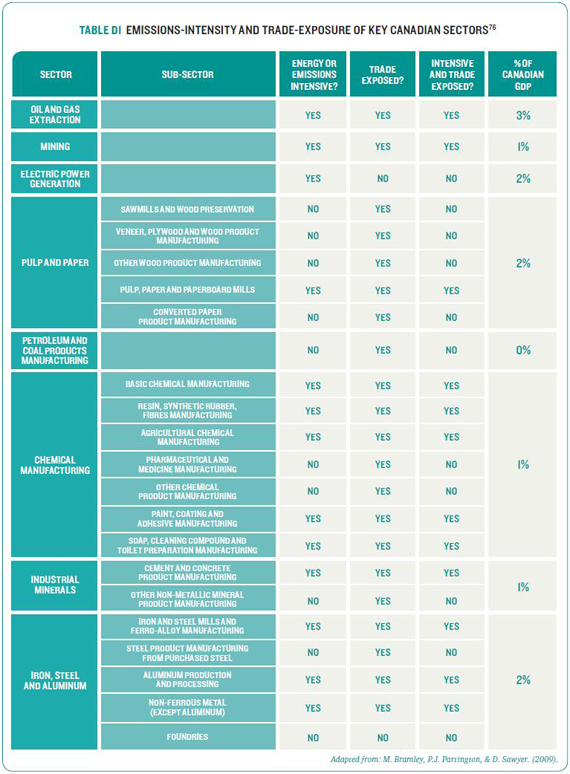Parallel Paths – 7.4 Assessment of Emissions-Intensive and Trade-Exposed sectors
This Appendix shows the assessment of key sectors in terms of meeting the criteria established in Waxman-Markey for being emissions-intensive and trade-exposed.
Emissions-intensive sectors are those sectors that have an emissions intensity (defined as $20 X total emissions / value of shipments) greater or equal to 5 %. Energy-intensive sectors are those that have an energy intensity (defined as costs of fuel purchase / the value of shipments) equal or greater to 5 %. Trade-exposed sectors are those sectors with a trade intensity (defined as (total value of exports and imports) / (total value of turnover and imports) of greater than 15 %. Table D1 shows how different key sectors and sub-sectors meet or do not meet these criteria.
[76] Other sectors not shown here include services and light manufacturing sectors which have low emissions and energy intensity.

























